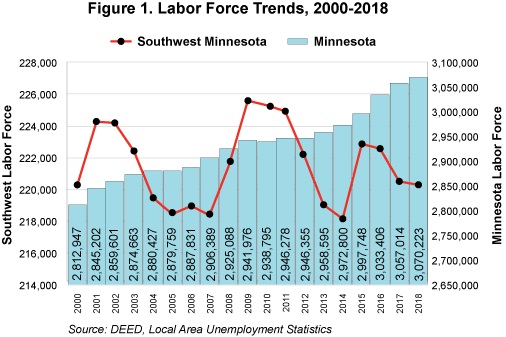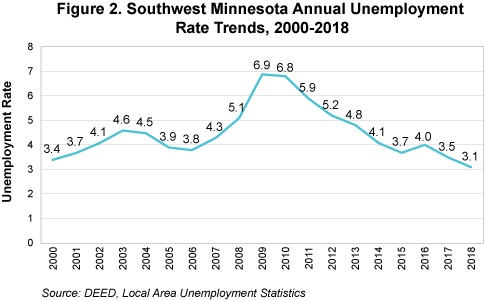 Southwest Minnesota is a national leader in agricultural production, and renewable energy.
Southwest Minnesota is a national leader in agricultural production, and renewable energy.
The region's thriving manufacturing sector includes food processing, machinery, printing, metal products, and computers and electronic products.
Want the freshest data delivered by email? Subscribe to our regional newsletters.
7/17/2019 9:00:00 AM
Luke Greiner
While Minnesota has enjoyed a steady increase in labor force participants year after year, the Southwest planning region has experienced ebbs and flows since 2000. In fact, there have been three periods during this time in which the regional labor force saw dramatic decreases, including a drop of almost 6,000 available workers from 2001 to 2007. As the Great Recession set in, workers flooded back into the labor market, reaching a new peak of 225,616 workers in 2009.
As the economy began to recover, the region again saw declines from 2009 to 2014, losing over 7,450 participants, to a new low of 218,153 workers. Southwest then saw a one-year jump of more than 4,700 additional workers, followed by another series of losses over the next three years. At the end of the roller coaster ride, the net result was an increase of only 51 labor force participants between 2000 to 2018, but a decrease of almost 5,300 workers since the peak in 2009 (Figure 1).


Contact Luke Greiner at 320-308-5378 or Mark Schultz.